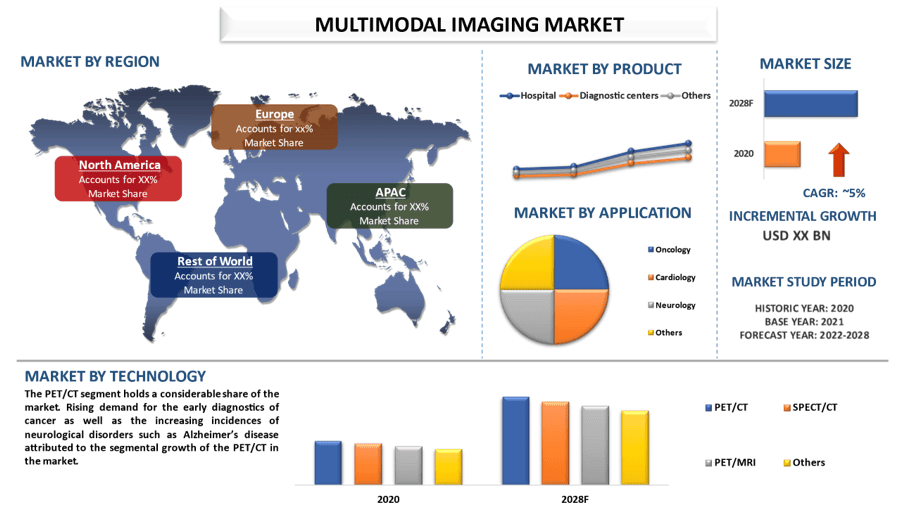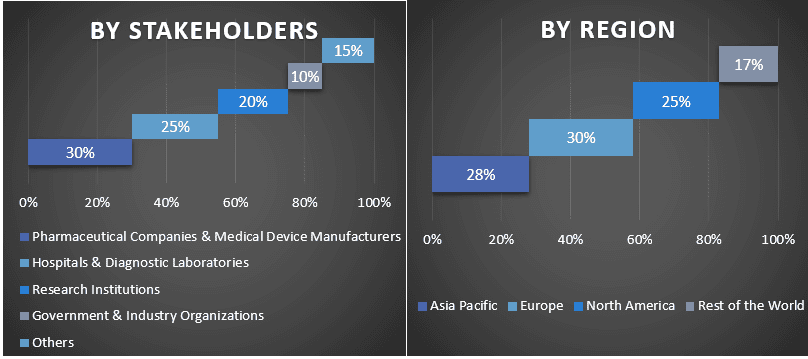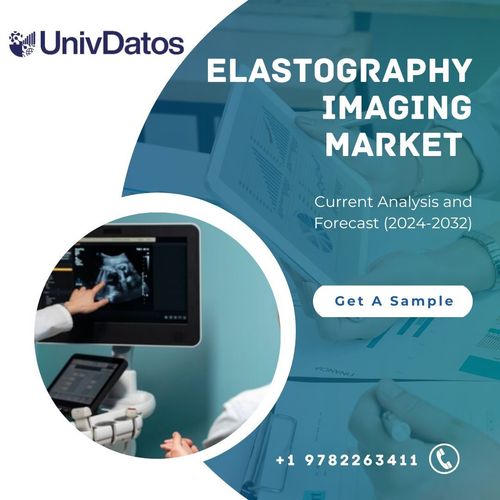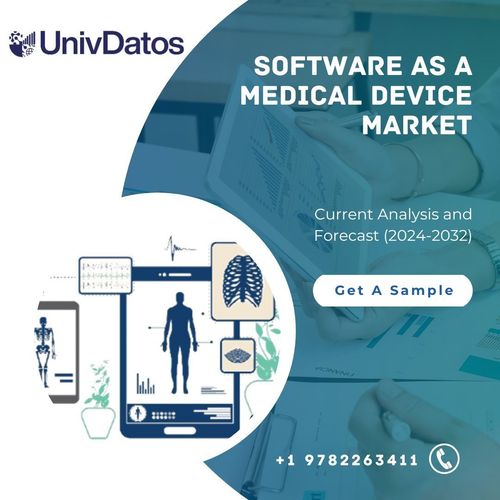Multimodal Imaging Market: Current Analysis and Forecast (2022-2028)
Emphasis on Technology (PET/CT, SPECT/CT, PET/MRI, and Others); Application (Oncology, Cardiology, Neurology, and Others); End-User (Hospitals, Diagnostic Centers, and Others); Region (North America, Europe, Asia-Pacific, Rest of the World); and Region/Country

The global Multimodal Imaging market is expected to grow at a significant rate of around 5% during the forecast period 2022-2028. With the increasing global aging population, the rising disease incidences along with the increasing demand for accurate imaging techniques attributes to the growth of the multimodal imaging market. For example, as per the CDC, about 697,000 people in the United States died from heart disease in 2020—that’s 1 in every 5 deaths. Coronary heart disease is the most common type of heart disease, killing 382,820 people in 2020. Furthermore, the increasing research investment and involvement of contract research organizations are also important factors affecting the market growth of the multimodal imaging market.
Canon Medical Systems Corporation, Carl Zeiss AG, GE Healthcare, Heidelberg Engineering, Infraredx Inc., Koninklijke Philips N.V., Mediso Medical Imaging Kft, MILabs B.V., Neusoft Medical Systems Co. Ltd., and Neusoft Medical Systems Co. Ltd. are some of the key players in the market. Several M&As along with partnerships have been undertaken by these players to facilitate customers with hi-tech and innovative products/technologies.
Insights Presented in the Report
“Amongst Technology, consumables & reagents category to witness higher CAGR during the forecast period”
Based on the technology, the market has been categorized into PET/CT, SPECT/CT, PET/MRI, and others. Among them, the PET/CT segment holds a considerable share of the market. A positron emission tomography (PET) scan is an imaging test that can help reveal the metabolic or biochemical function of tissues and organs. The PET scan uses a radioactive drug (tracer) to show both normal and abnormal metabolic activity. The ability to early detection of cancer, Alzheimer’s disease, and good reimbursements attributes to the growth of the segment in the multimodal imaging market.
“Amongst Application, Oncology category to witness higher CAGR during the forecast period”
Based on the application, the market has been categorized into oncology, cardiology, neurology, and others. Among them, the oncology segment holds a considerable share of the market. This is due to the higher prevalence of cancer and the higher number of deaths associated with it are the main reasons for the significant share of the segment. For instance, According to WHO, in 2020, there were 2.3 million women diagnosed with breast cancer and 685 000 deaths globally. As of the end of 2020, there were 7.8 million women alive who were diagnosed with breast cancer in the past 5 years, making it the world’s most prevalent cancer.
“Amongst End-user, hospitals segment to hold a significant share in the market in 2020”
Based on end-users, the market is fragmented into hospitals, diagnostic centers, and others. In 2020, the hospital segment grabbed a considerable market share, and it is expected to grow at a significant CAGR during the forecast period. Hospitals provide treatments and diagnostics under a single roof which is one of the important reasons for the growth of the segment. Furthermore, increasing number of patients visits in hospitals and the presence of specialized staff in the facilities attributes to the growth of segment in market.
“Asia Pacific to witness fastest growth in the market”
For a better understanding of the market adoption of the Multimodal Imaging industry, the market is analyzed based on its worldwide presence in the countries such as North America (United States, Canada, and the Rest of North America), Europe (Germany, France, Italy, Spain, United Kingdom and Rest of Europe), Asia-Pacific (China, Japan, India, Australia, and Rest of APAC), and Rest of World. The Asia Pacific witnessed the fastest growth during the forecast period. This is mainly due to the presence of emerging economies along with a continuously increasing geriatric population attributes to the growth of the market in the region. Furthermore, increasing investments in healthcare infrastructure along with rising personal income are the important reason for the growth of the market. For instance, the total disposable income of Indians accounted for USD 2.9 million in 2021 which increased by around 38% from 2017.
Reasons to buy this report:
- The study includes market sizing and forecasting analysis validated by authenticated key industry experts.
- The report presents a quick review of overall industry performance at one glance.
- The report covers an in-depth analysis of prominent industry peers with a primary focus on key business financials, product portfolio, expansion strategies, and recent developments.
- Detailed examination of drivers, restraints, key trends, and opportunities prevailing in the industry.
- The study comprehensively covers the market across different segments.
- Deep dive regional level analysis of the industry.
Customization Options:
The global Multimodal Imaging market can further be customized as per the requirement or any other market segment. Besides this, UMI understands that you may have your own business needs, hence feel free to connect with us to get a report that completely suits your requirements.
Table of Contents
Research Methodology for the Multimodal Imaging Market Analysis (2022-2028)
Analyzing the historical market, estimating the current market, and forecasting the future market of the global Multimodal Imaging market were the three major steps undertaken to create and analyze the adoption of Multimodal Imaging in major regions globally. Exhaustive secondary research was conducted to collect the historical market numbers and estimate the current market size. Secondly, to validate these insights, numerous findings and assumptions were taken into consideration. Moreover, exhaustive primary interviews were also conducted, with industry experts across the value chain of the global Multimodal Imaging market. Post assumption and validation of market numbers through primary interviews, we employed a top-down/bottom-up approach to forecasting the complete market size. Thereafter, market breakdown and data triangulation methods were adopted to estimate and analyze the market size of segments and sub-segments of the industry pertains to. Detailed methodology is explained below:
Analysis of Historical Market Size
Step 1: In-Depth Study of Secondary Sources:
Detail secondary study was conducted to obtain the historical market size of the Multimodal Imaging market through company internal sources such as annual reports & financial statements, performance presentations, press releases, etc., and external sources including journals, news & articles, government publications, competitor publications, sector reports, third-party database, and other credible publications.
Step 2: Market Segmentation:
After obtaining the historical market size of the Multimodal Imaging market, we conducted a detailed secondary analysis to gather historical market insights and share for different segments & sub-segments for major regions. Major segments are included in the report as product, technology, application, and end-users. Further country-level analyses were conducted to evaluate the overall adoption of testing models in that region.
Step 3: Factor Analysis:
After acquiring the historical market size of different segments and sub-segments, we conducted a detailed factor analysis to estimate the current market size of the Multimodal Imaging market. Further, we conducted factor analysis using dependent and independent variables such as the technology, application, and end-users of Multimodal Imaging. A thorough analysis was conducted for demand and supply-side scenarios considering top partnerships, mergers and acquisitions, business expansion, and product launches in the Multimodal Imaging market sector across the globe.
Current Market Size Estimate & Forecast
Current Market Sizing: Based on actionable insights from the above 3 steps, we arrived at the current market size, key players in the global Multimodal Imaging market, and market shares of the segments. All the required percentage shares split, and market breakdowns were determined using the above-mentioned secondary approach and were verified through primary interviews.
Estimation & Forecasting: For market estimation and forecast, weights were assigned to different factors including drivers & trends, restraints, and opportunities available for the stakeholders. After analyzing these factors, relevant forecasting techniques i.e., the top-down/bottom-up approach were applied to arrive at the market forecast for 2028 for different segments and sub-segments across the major markets globally. The research methodology adopted to estimate the market size encompasses:
- The industry’s market size, in terms of revenue (USD) and the adoption rate of the Multimodal Imaging market across the major markets domestically
- All percentage shares, splits, and breakdowns of market segments and sub-segments
- Key players in the global Multimodal Imaging market in terms of products offered. Also, the growth strategies adopted by these players to compete in the fast-growing market
Market Size and Share Validation
Primary Research: In-depth interviews were conducted with the Key Opinion Leaders (KOLs) including Top Level Executives (CXO/VPs, Sales Head, Marketing Head, Operational Head, Regional Head, Country Head, etc.) across major regions. Primary research findings were then summarized, and statistical analysis was performed to prove the stated hypothesis. Inputs from primary research were consolidated with secondary findings, hence turning information into actionable insights.
Split of Primary Participants in Different Regions

Market Engineering
The data triangulation technique was employed to complete the overall market estimation and to arrive at precise statistical numbers for each segment and sub-segment of the global Multimodal Imaging market. Data was split into several segments & sub-segments post studying various parameters and trends in the areas of the application and product type in the global Multimodal Imaging market.
The main objective of the Global Multimodal Imaging Market Study
The current & future market trends of the global Multimodal Imaging market were pinpointed in the study. Investors can gain strategic insights to base their discretion for investments on the qualitative and quantitative analysis performed in the study. Current and future market trends determined the overall attractiveness of the market at a regional level, providing a platform for the industrial participant to exploit the untapped market to benefit from a first-mover advantage. Other quantitative goals of the studies include:
- Analyze the current and forecast market size of the Multimodal Imaging market in terms of value (USD). Also, analyze the current and forecast market size of different segments and sub-segments
- Segments in the study include areas of technology, application, and end-users.
- Define and analysis of the regulatory framework for the Multimodal Imaging industry.
- Analyze the value chain involved with the presence of various intermediaries, along with analyzing customer and competitor behaviors of the industry.
- Analyze the current and forecast market size of the Multimodal Imaging market for the major region.
- Major countries of regions studied in the report include Asia Pacific, Europe, North America, and the Rest of the World.
- Company profiles of the Multimodal Imaging market and the growth strategies adopted by the market players to sustain in the fast-growing market
- Deep dive regional level analysis of the industry
Related Reports
Customers who bought this item also bought










